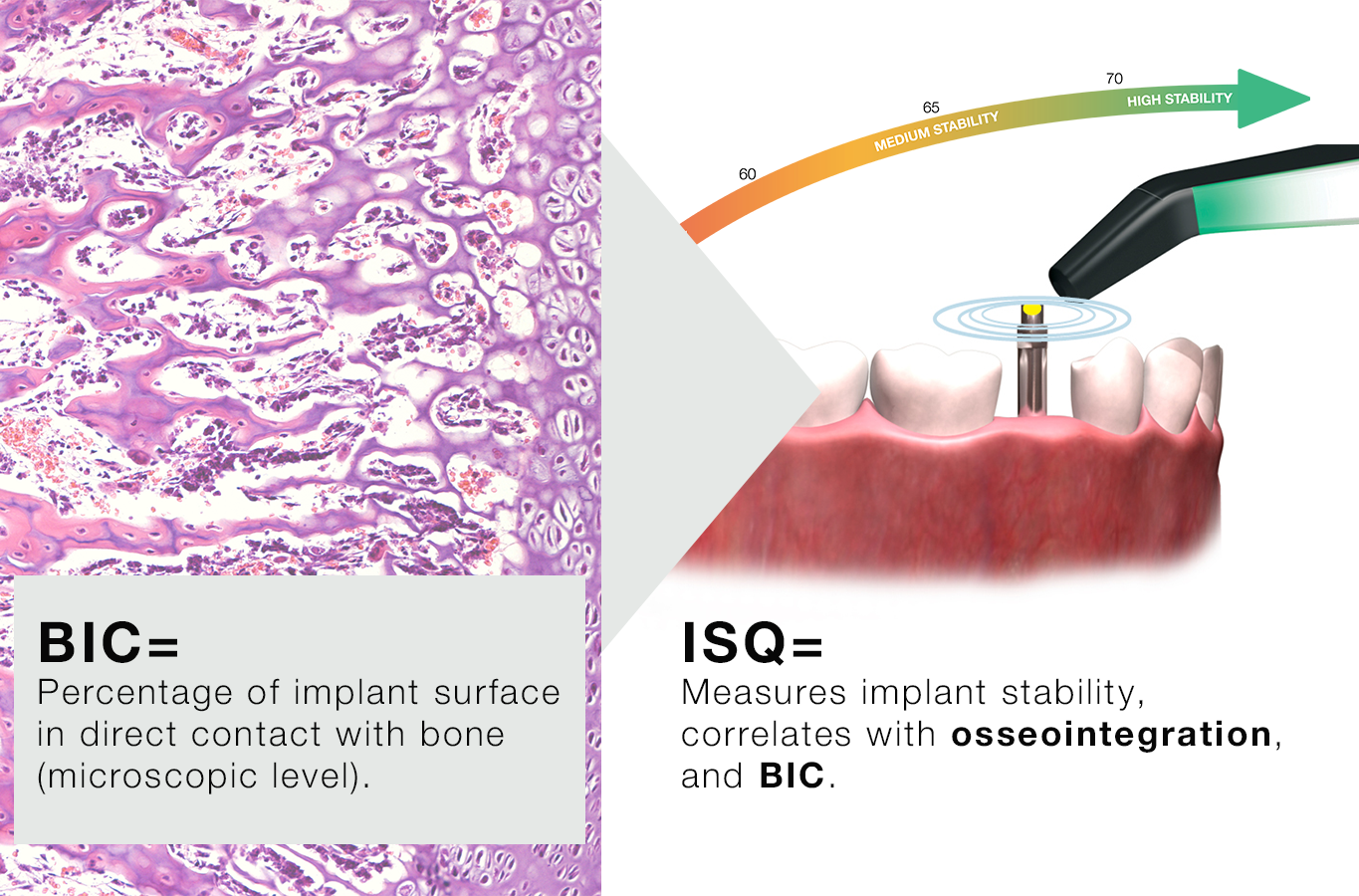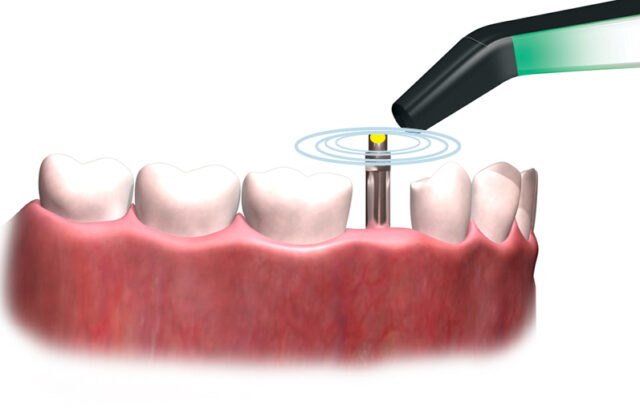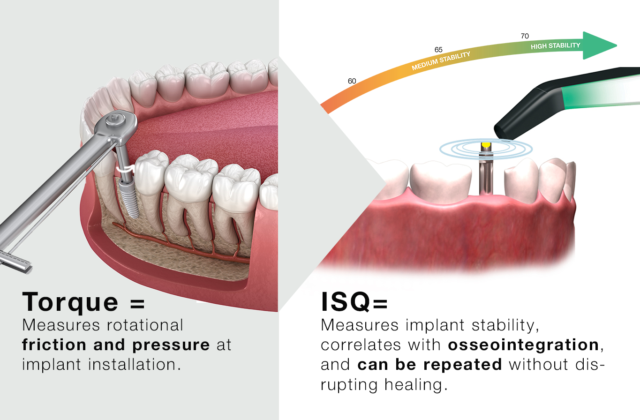
How ISQ correlates to BIC
BIC, or Bone to Implant Contact, is the percentage of the implant surface in contact with bone on a microscopic level.
ISQ and Bone to Implant Contact (BIC)
Bone to implant contact (BIC) is the percentage of the implant surface in contact with bone on a microscopic level.
Young’s Modulus, Stability and Micro Motion
If the E-modulus (Young’s modulus) is high, in any material, it means that the material stiffness is high. If a tapered screw is screwed into hard wood for instance, the stability will be high due to the relatively high stiffness of the wood. Such a screw will move very little when subjected to forces (low micromotion) even if the “screw-to-bone” contact might be in the range of 50 % or lower. Even if the screw is glued in place and thus increasing the “screw-to-bone” contact to 100 %, the stability will not increase significantly since the stability was already high from the beginning. This reasoning is valid for practically all solid materials, including dense bone. For the reasons above, BIC does not have a linear correlation with implant stability. Osstell (RFA) measures the implant stability by measuring the stiffness in the interface between the implant and the bone which in turn is a measurement of the micro mobility (µm /N).
In Soft to Medium Bone
When the initial stability is low to medium, osseointegration will change the bone around the implant so that the stability and stiffness increases (and also BIC). In this case there will be a good correlation between ISQ and BIC.
In Dense Bone
When the initial stability is high (e.g. above 75 ISQ), osseointegration will not add stability to the implant in a significant way. Even if the BIC is increasing, the implant stability will not change much, which is reflected by the ISQ value. In this case, the correlation between BIC and ISQ will be poor.
Failing Implants
For implants that does not integrate, the stiffness will decrease and the stability will go down. This will be reflected by the decreasing ISQ value. The above implies that it is possible to have relatively high BIC but low ISQ in soft bone, and low BIC with high ISQ in dense bone.


